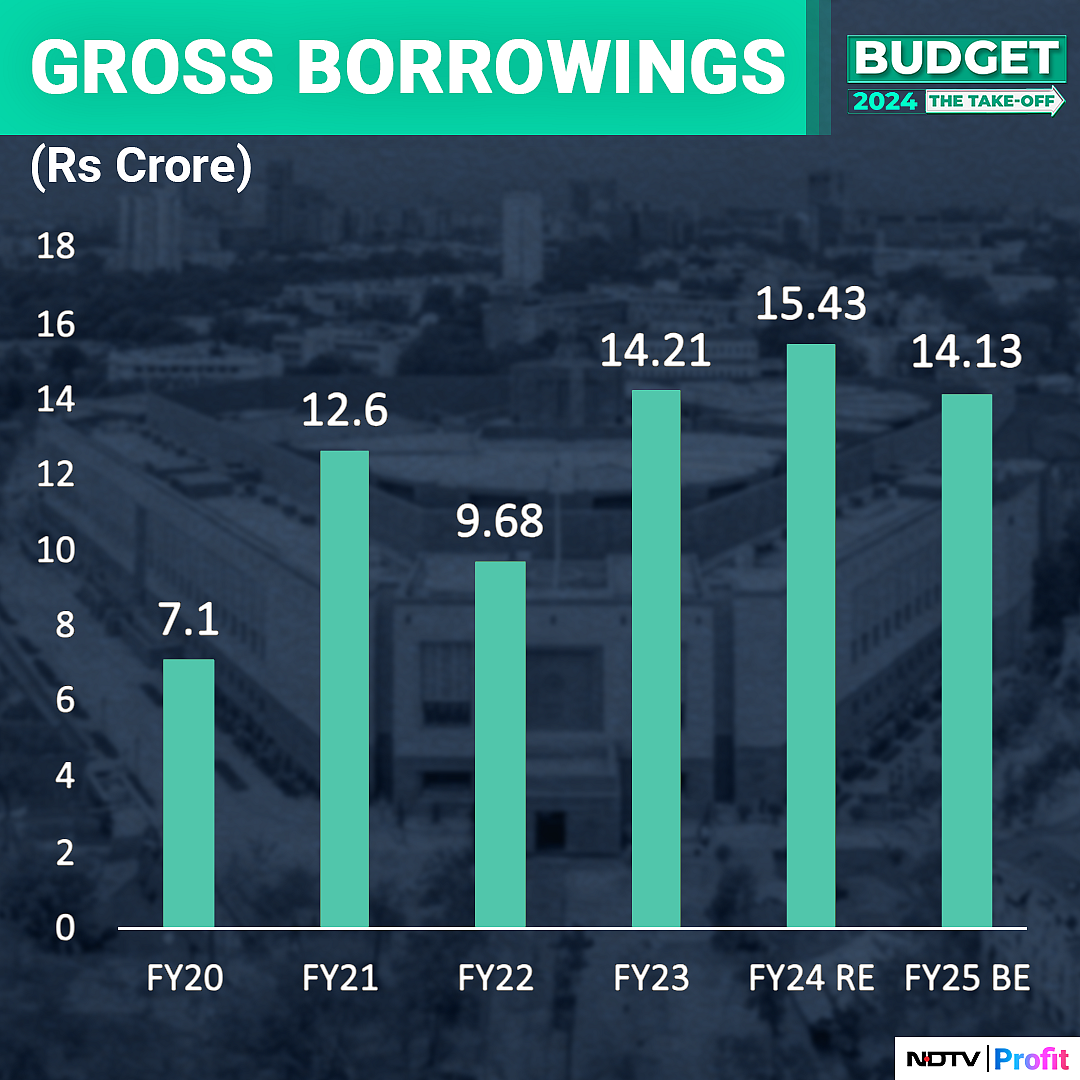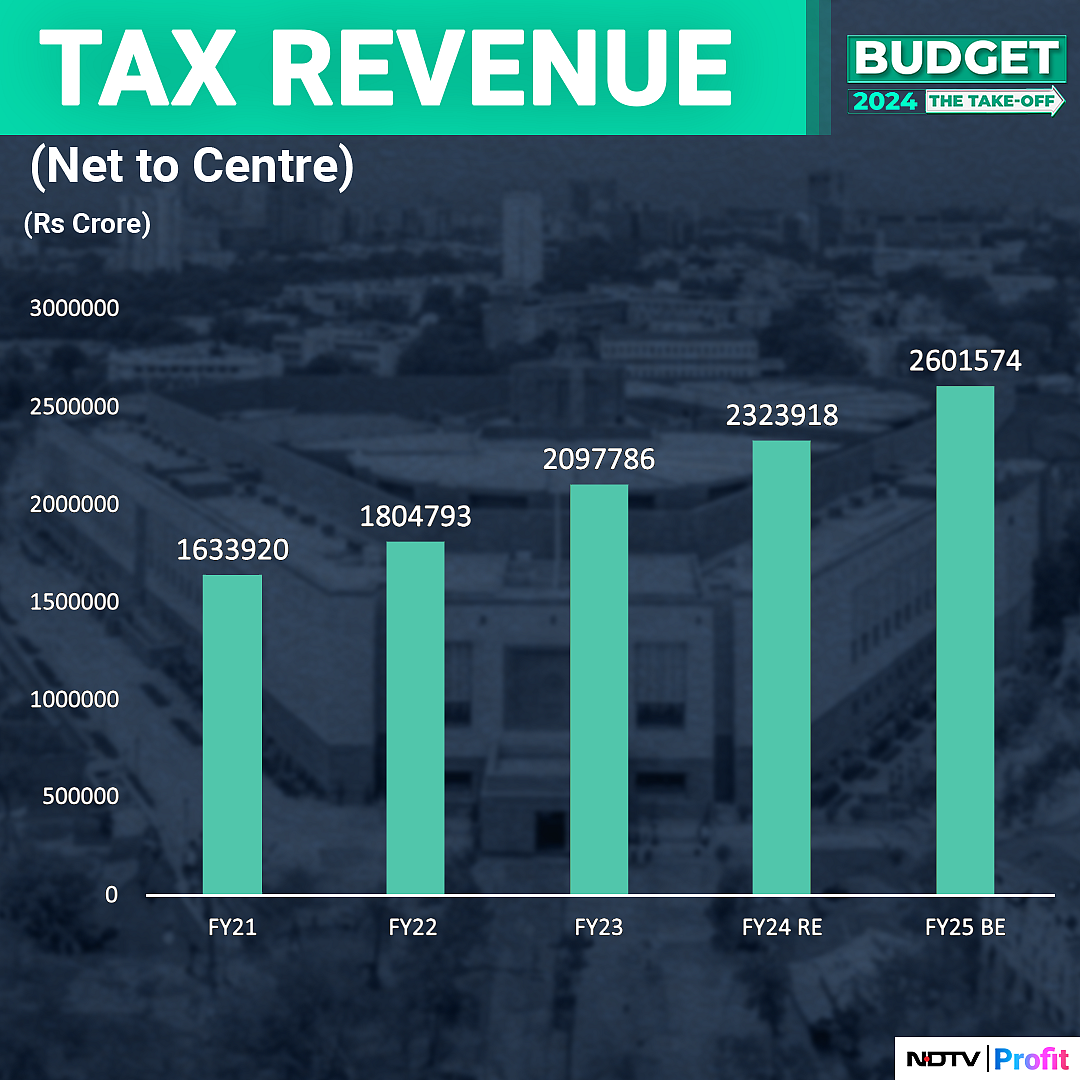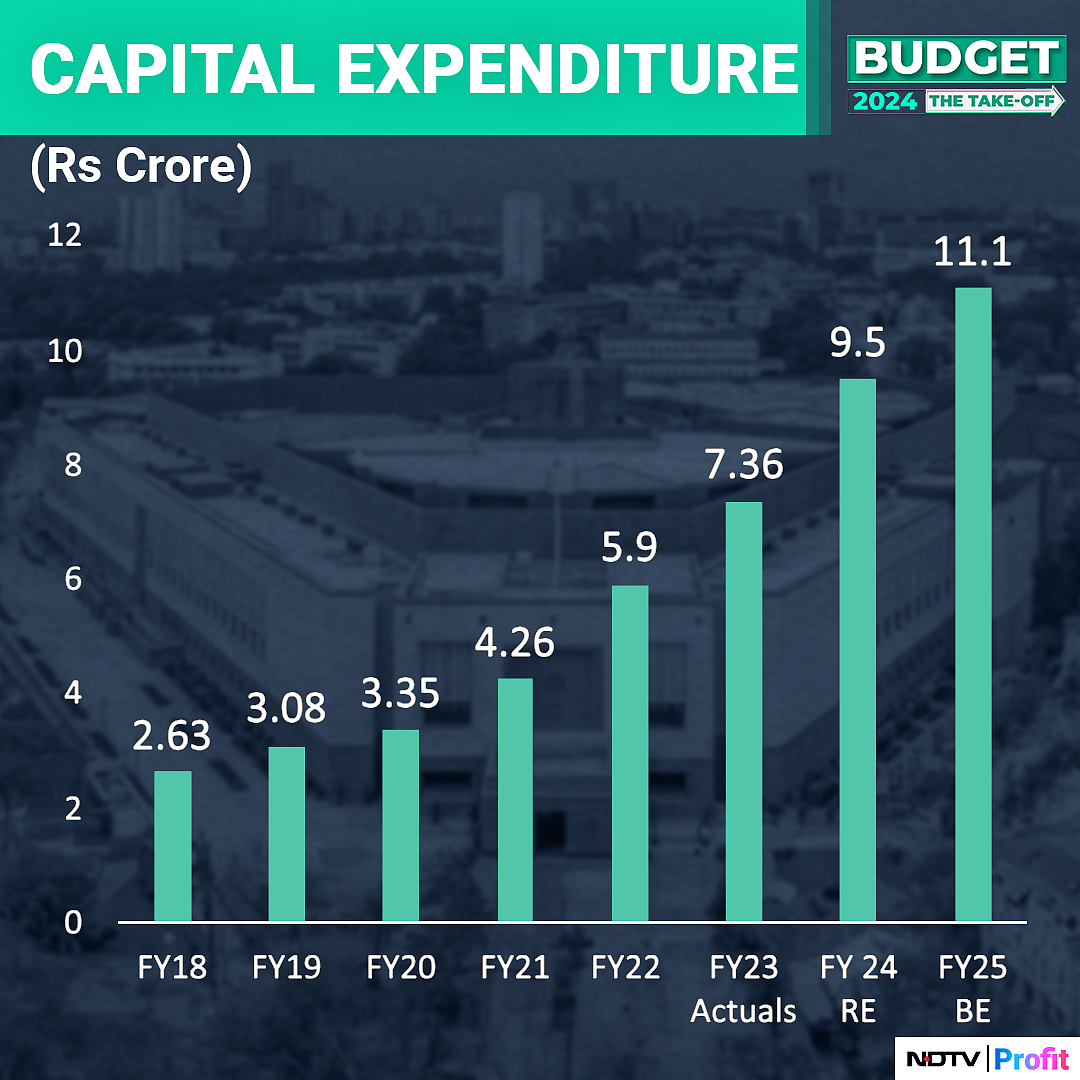Budget 2024: Fiscal Consolidation Priority, Budget Math Realistic, Say Economists
The budget has stuck to the task of following the path of fiscal prudence and indicated 5.1% as the deficit target for FY25.

Finance Minister Nirmala Sitharaman presented the interim budget 2024 on Thursday. While the full budget for FY25 will be presented after the general election, Sitharaman made some key announcements and offered a glimpse of the government's roadmap for the upcoming fiscal.
The government continued on its path to fiscal consolidation and its thrust on capex.
The Path To Fiscal Consolidation
The budget has stuck to the task of following the path of fiscal prudence and indicated 5.1% as the deficit target for FY25. Given that the government was able to maintain the deficit ratio at 5.8% instead of 5.9% for FY24, even though the denominator was lower, it does look like a pragmatic target, said Madan Sabnavis, chief economist at Bank of Baroda. "It does look likely that the target of 4.5% will be achieved in FY26."
This was not a pre-election budget, said Sonal Varma, chief economist at Nomura. While the budget speech talked a lot about the key voter constituents, it has chosen to prioritise fiscal consolidation, she said. This bodes well for macro stability and will be seen as positive by the RBI as well.

The budget has a negative fiscal impulse, with the gross fiscal deficit contracting by Rs 49,000 crore and the primary deficit reducing by Rs 1.8 lakh crore, said Sahil Kapoor, market strategist at DSP Mutual Fund.

Net Tax Revenue: Expected to Grow 12%
Nominal GDP for BE2024-25 has been projected at Rs 3,27,71,808 crore, assuming 10.5% growth over the First Advance Estimates of FY24.
A modest tax growth of 11.5% vs nominal GDP of 10.5% in FY25 is assumed, implying reduced tax buoyancy (1.09x vs 1.4x in FY24RE) amid a normalizing growth cycle. India's fiscal profile has become structurally healthy, given better tax compliance and resilience in domestic growth, as depicted in the higher gross tax/GDP ratio of 11.7% compared to 11.6% in FY24RE, said Madhavi Arora, lead economist at Emkay Institutional Equities.
Net tax revenue is expected to grow by about 12% to Rs 26 lakh crore.

Separately, non-tax revenue has again been kept healthy, led by RBI/PSU dividend, largely similar to last year’s bumper surplus, said Arora. The divestment target has been again set at about Rs 50,000 crore, however, windfall gains from stake sales of the government's large holdings may once more fall short, amid the shallow global commodity cycle, as such stakes are mainly concentrated in commodity and utilities companies, she added.
Expenditure: Set to Rise 6%
The rise in expenditure is expected at 6% to Rs 47.66 lakh crore for FY25. This is the lowest growth in eight years, and less than half of the eight-year average of 12.4%, said Kapoor.
Since the government’s total expenditure is budgeted to grow just 6.1% in FY25BE, the share of capital spending is budgeted to rise to 23.3% of total spending, marking the highest share in the past three decades, stated a research note by Motilal Oswal.
Capex is set to continue to rise by 16.9% to Rs 11.11 lakh crore in FY25, shifting up the capex-to-GDP ratio to 3.4%.

The pace of increase in capex will slow slightly in FY25, but that was expected, said Varma of Nomura. Over the last 2-3 years, private capex was weak, so public capex stepped in. Now, with private capex likely to pick up, the government is slowly stepping back to prevent crowding out, she said.
"We see the assumptions as reasonable overall," she said. Nominal GDP growth is assumed at 10.5%, disinvestment target set at Rs 50,000 crore, gross tax revenue budgeted to rise 11.5% year-on-year and subsidies at Rs 3.8 lakh crore.
"There will be some hits and misses, but seems achievable overall."